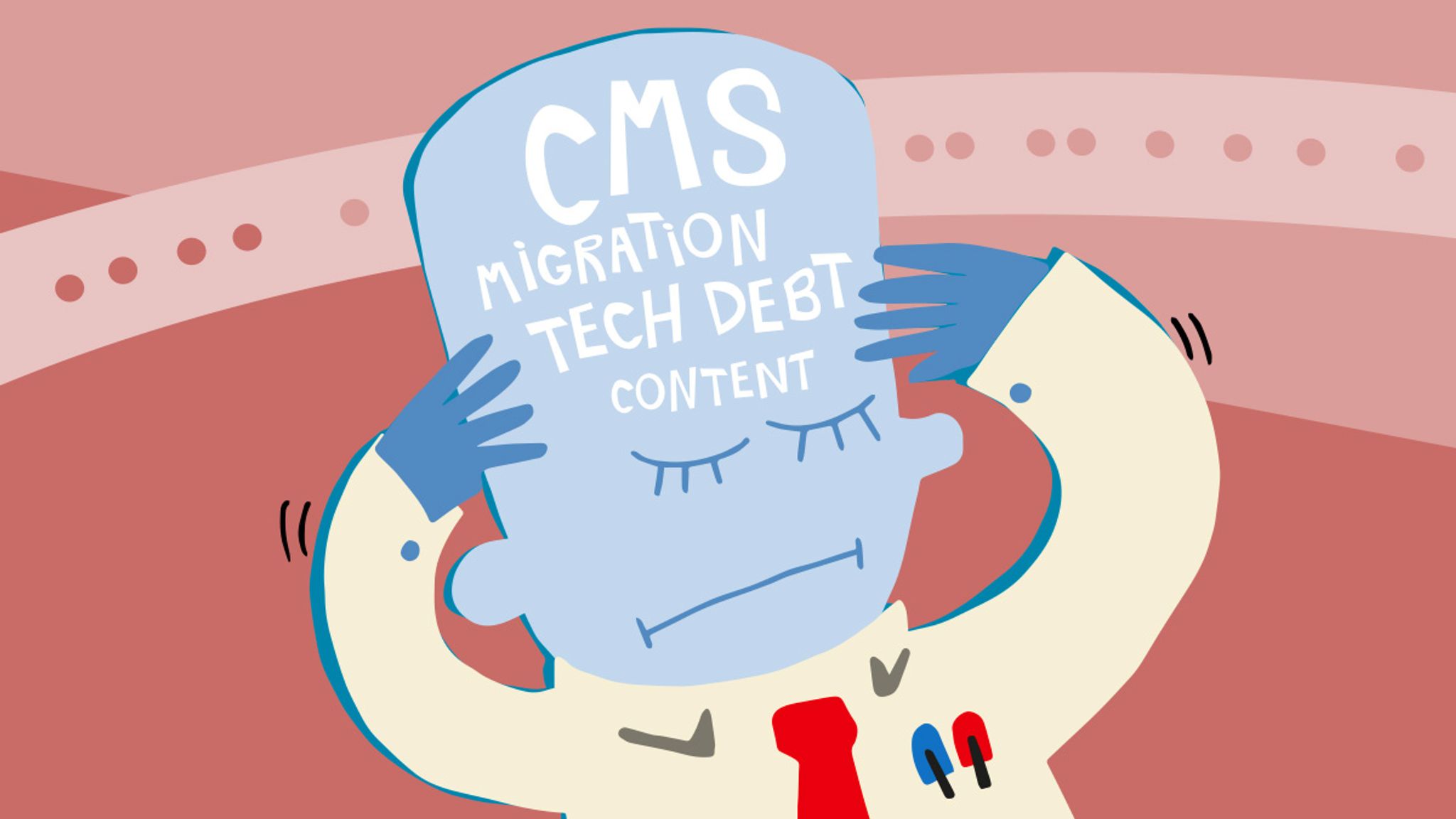Overcoming CMS Migration Technical Debt

Migrating to a new CMS is fraught with challenges, including technical debt. Here are five steps to help prevent it from spiraling out of control – so your development teams can focus on innovation.
Technical debt is a challenge that increases as digital business gets more complex. This debt accumulates when companies opt for quick-fix solutions or continue to rely on outdated systems, sacrificing long-term efficiency for short-term gains. As the digital world accelerates, technical debt compounds, leading to increased costs and reduced agility.
A recent study revealed more than 70% of businesses report that technical debt is significantly impeding their ability to innovate. With technological advances rapidly outpacing the ability of companies to adapt, the issue of technical debt has never been more pertinent.
When migrating to a new Content Management System (CMS), reducing, and mitigating technical debt should be front of mind. Proactively managing debt as part of your migration strategy will lead to a smoother transition and lower the total cost of ownership (TCO) of the new solution. What’s more, development teams can focus on innovation rather than simply keeping the lights on.
The Cost of Neglect: When Technical Debt Spirals
Several factors contribute to technical debt during CMS migrations. For instance, insufficient communication between teams leads to rushed fixes and missed opportunities. Effective communication channels should be established to facilitate seamless collaboration. By doing so, insights and concerns on a project can be shared easily and addressed in a timely manner rather than six months down the line.
Organizations should also ensure they aren’t just “lifting and shifting” problems from one platform to the next. Too many teams waste time and resources moving outdated assets, duplicate data, and unused features. This coupled with time pressures and skills gaps means some organisations end up moving to new platforms without fully capitalising on what they have to offer.
Lastly, if training and employee adoption are treated as an afterthought, transitioning to a new CMS will be a painful process. In the worst-case scenario, all the migration work is done just for people to default back to old working methods. Having an effective change management program is essential.
Ensuring Your Migration is a Success
To make any CMS migration a success, businesses should follow five steps to reduce technical debt:
1. Set Up an Internal Migrations Team
This team should comprise representatives from various departments, ensuring a comprehensive understanding of how content is used across the organization. Their role includes planning the migration, identifying challenges, allocating resources, and ensuring smooth knowledge transfer. For example, the team can establish global standards for content governance and documentation, and train colleagues in new operational methods. This ensures that all perspectives are considered, leading to a migration that aligns with the needs of the entire organization.
2. Conduct a Content Audit
A thorough content audit is essential to identify redundant, obsolete, or trivial data that need not be migrated. This process involves mapping out where data lives, who owns it, the content types used, and interrelationships between datasets. Particularly when moving from a monolithic to a headless CMS; understanding the support structure of different processes is critical, as legacy data models may not directly translate to a headless approach and may require adjustments during migration.
3. Consolidate and Simplify Workflows
This step involves identifying overlapping capabilities, pinpointing outdated tools causing frustrations, and determining how processes can be streamlined with the new CMS. For example, German food and beverage maker, Dr. Oetker, is using a headless CMS to manage digital experiences across 40 countries from a single platform, allowing for consistent branding, streamlined processes, and rapid global updates.
4. Design a Composable Content Strategy
Adopting a composable content strategy is key for maximizing the benefits of a headless CMS. This strategy involves defining reusable content models, such as “blog post models” or “call to action models,” that can be displayed across various channels. This modular approach enables quick solution development for current use cases, with the flexibility to adjust models for future needs. It also empowers business users to create unique experiences without developer assistance, exemplifying the shift from a page-based to an omnichannel business mindset.
5. Federate Your Content Sources
As digital experiences expand, content often relies on data from multiple applications and external sources. Federating content sources is about integrating these sources in a way that minimizes maintenance-heavy integrations and resource-intensive processes.
The demand for connected digital services shows no sign of slowing down, so organizations’ content strategies are increasingly under the microscope. For those looking to migrate their CMS, now is the opportunity to proactively take measures to reduce technical debt, meaning they can focus on future innovation rather than have one eye on their rear-view mirror.
Upcoming conferences

CMS Connect 24
August 6-7, 2024 – Montreal, Canada
We are delighted to present our first annual summer edition of our prestigious international conference dedicated to the global content management community. Join us this August in Montreal, Canada, for a vendor-neutral conference focused on CMS. Tired of impersonal and overwhelming gatherings? Picture this event as a unique blend of masterclasses, insightful talks, interactive discussions, impactful learning sessions, and authentic networking opportunities.

CMS Kickoff 25
January 14-15, 2025 – Tampa Bay Area, Florida
Join us next January in the Tampa Bay area of Florida for the third annual CMS Kickoff – the industry's premier global event. Similar to a traditional kickoff, we reflect on recent trends and share stories from the frontlines. Additionally, we will delve into the current happenings and shed light on the future. Prepare for an unparalleled in-person CMS conference experience that will equip you to move things forward. This is an exclusive event – space is limited, so secure your tickets today.
